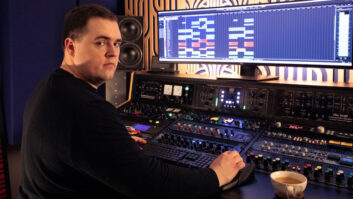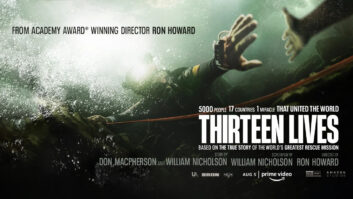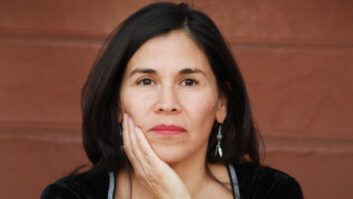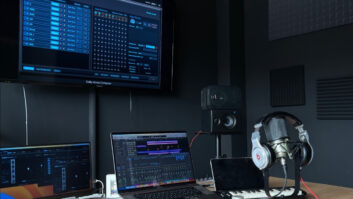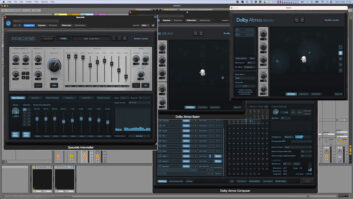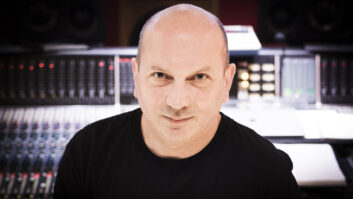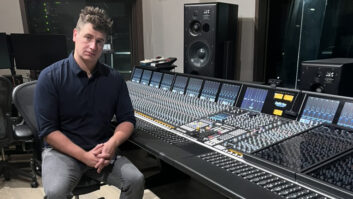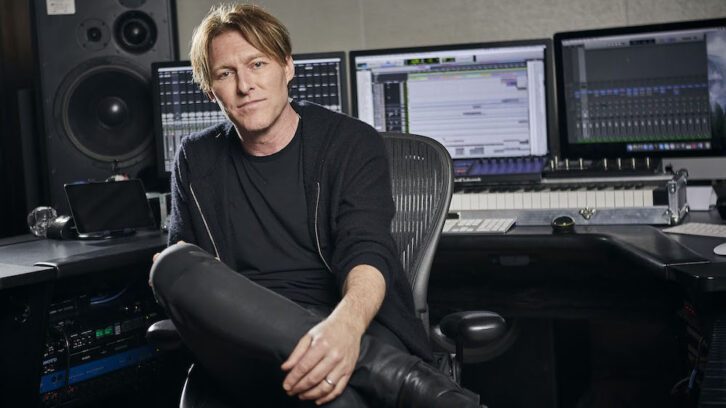
In the first week of April, Tyler Bates returned home to Los Angeles following the most recent six-week, North American leg of a now year-long tour as a guitarist in Jerry Cantrell’s band. Just prior to that, he and longtime friend Joel Richard had wrapped up the score for John Wick: Chapter 4, while at the same time, Bates produced four songs that appeared in the film and on the soundtrack—two of which he wrote: one for pop star Rina Sawayama, and the other being “I Would Die For You” by In This Moment, which quickly became one of the act’s most-streamed songs of all-time.
Before that, more touring with Cantrell, music for the Netflix adult animated show Agent Elvis, producing the multi-artist Dark Nights Death Metal soundtrack, producing the hot new act Starcrawler, more touring, co-writing the scores for two Ti West films, X (with Chelsea Wolfe) and Pearl (with Timothy Williams), finishing the music for a new Guardians of the Galaxy roller-coaster at Disney World, said to be the largest ride the company has ever built, and co-writing (with Joanne Higginbottom) the music for 10 episodes of the upcoming Adult Swim animated series Unicorn: Warriors Eternal and 10 episodes of Adult Swim’s Genndy Tartakovsky’s Primal Season 2.
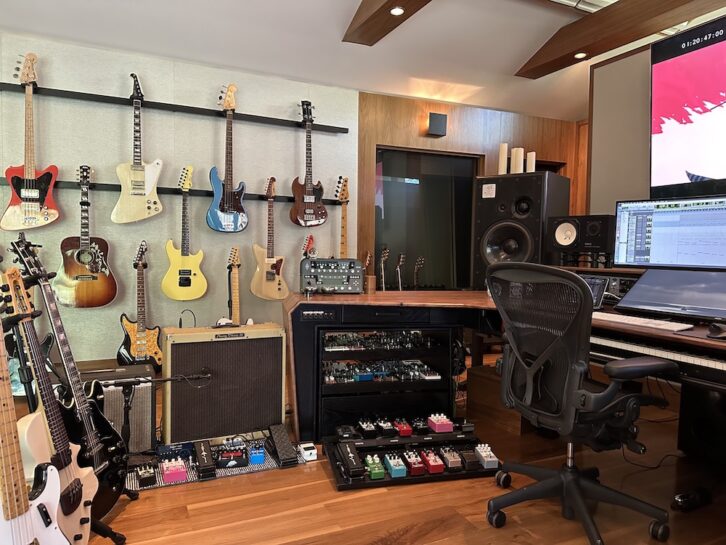
That’s just the past 18 months. Before that, he produced Cantrell’s highly personal 2021 release, Brighten, with Cantrell and Paul Figueroa, and continued writing dozens and dozens of songs with collaborators across all musical genres, most of them close friends. Some of those songs have been placed in the films and shows he’s been involved with.
Oh, and the day after getting home, he was planning to tackle final tweaks on the last two songs of the first EP by his 21-year-old daughter, Lola Colette, who performed as the keyboardist/backing vocalist on two legs of Jerry Cantrell’s Brighten tour after starting as the opening act. Bates also produced her version of the Martha & The Vandellas classic “Nowhere to Run,” which was recorded in an afternoon in New York while on tour last spring and meant to be a demo/placeholder while the directors shopped it around to up-and-coming female artists. Lola’s version struck a chord and now appears in John Wick 4 and on the soundtrack album.
“Jerry is a close friend, and it’s been really amazing to experience this tour with this group of musicians that I put together, including my daughter,” Bates says. “This is not your typical group of ‘gigging musicians’—everyone in the band is close friends. The entire Brighten tour was an exceptional experience for us all to share. We finished up the other night, which happened to be April Fool’s Day, in Jerry’s hometown of Tacoma, where the mayor came to the venue and deemed it Jerry Cantrell Day. No joke! [laughs] It was a fun moment for him, which is cool. He’s a great person, a great friend, and an absolutely exceptional artist. I’m happy that after urging Jerry to make this record it brought many people together for an incredible musical journey.”
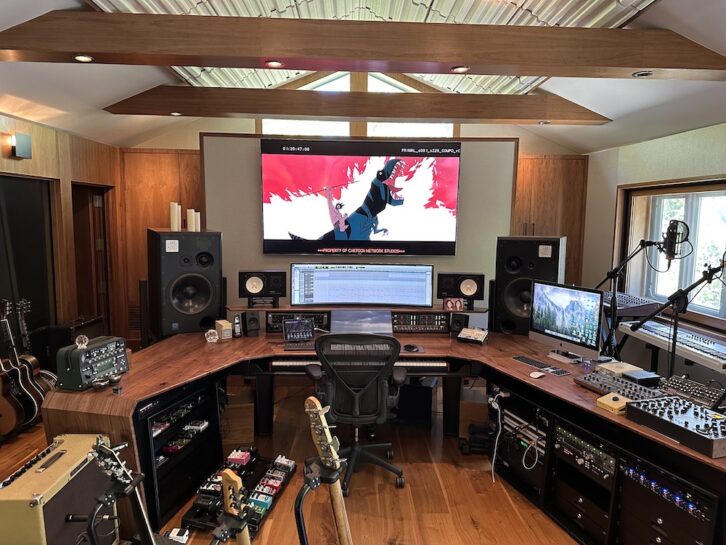
COLLABORATION AND VARIETY
With the combination of touring, record production and scoring to picture, not to mention the travel, a family life with a wife of 24 years and two grown daughters, and the ongoing cultural and creative shifts in music and entertainment, it all sounds exhausting. Sounds like a coming-out-of-Covid explosion of musical expression, everywhere possible. Except that this is how Bates works—across multiple musical outlets, with multiple people in the room—since moving from Chicago to Los Angeles in June 1993 and forming the band Pet with Lisa Papineau in 1994, before going on to score 16 movies by the time their record was released in fall of 1996.
“I’ve always loved the full spectrum of music—not just rock music,” Bates explains. “I began as an alto sax player, but once I picked up my first guitar, I was hooked, and from that day forward, I identified as a guitar player with aspirations of rock stardom, but the lens through which I view my life is informed and corrupted by the musical odyssey I began as a kid. I have always had a vision for myself that cannot be solely satiated through the film-scoring process, so I have pursued my love for songwriting, producing, collaborating and performing with remarkably talented artists. I need to express music viscerally through my actual body, live, in real-time. By doing this, I am able to bring positive energy and an evolving perspective to my scoring work in film, television and video games.
“I sometimes fall into an existential crisis because the film process doesn’t satisfy me 100 percent,” he continues. “It might in the context of a particular movie, but over the course of time, I need to do other things to freshen and broaden my perspective. And with music. I need to play music. I need it to come through my body.”
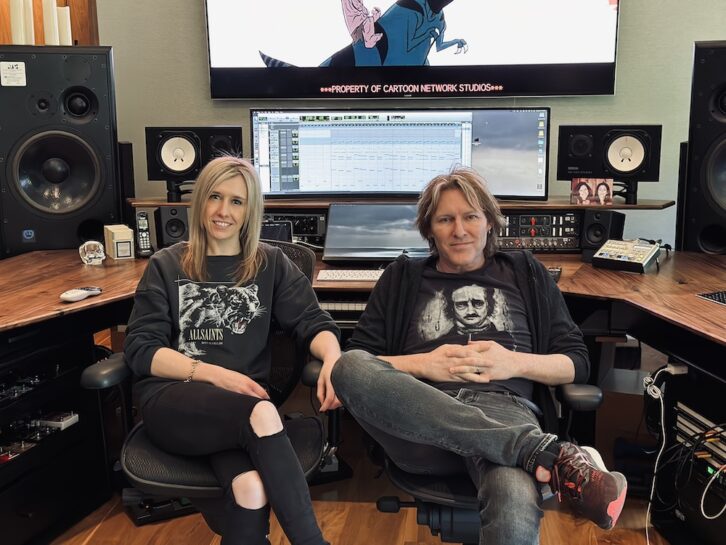
By 2004, Bates had started writing music for bigger-budget films and, over the next two years, hooked up with director Zack Snyder for Dawn of the Dead, Rob Zombie for The Devil’s Rejects and James Gunn on Slither. He would go on to do multiple films with each, to be followed by ongoing collaborations with directors such as Ti West, David Leitch and Chad Stahelski, the latter two bringing him into the hyperreal, martial arts-laden, graphic-novel world of John Wick nearly a decade ago.
MARILYN MANSON MEETS JOHN WICK
“The first John Wick film was truly an independent film,” recalls Bates, “and before the directors Chad Stihelski and David Leitch had their first cut of the film, they had the music supervisor, John Houlihan, who coincidentally I had known for many years, reach out to Manson’s people for an original song for the movie, which led them to me because Manson and I were writing The Pale Emperor record together at that time. First, Houlihan came over to listen to the record, which was still a work in progress at the time, and he was like, ‘Jesus, man, I had no idea you wrote and produced records, too!’
“Then a couple of days later, the directors, Keanu Reeves and Manson came over with John, and we listened to the record at full rock-concert volume,” he continues. “The song ‘Killing Strangers’ came up, and they were like, ‘That’s it. That’s the theme song for John Wick.’
Composer Tyler Bates Can’t Sit Still
“After the meeting, they asked me to score the film, but I was scoring Guardians of the Galaxy at the time, so I said regretfully, ‘I can’t do the movie.’ That’s when they asked if I would consider collaborating with someone so they could get things rolling and that I would jump into the world of John Wick once I was available. I immediately thought of my good friend Joel Richard as my collaborator of choice. Joel and I are close friends, and from seeing the teaser that Chad and Dave screened for Manson and I, I knew that his sensibilities as a composer would make for a great collaboration for the film’s hybrid rock score. Once we wrote the main theme, the color palate and attitude of the score was determined. Joel and I have enjoyed an intense collaboration over the course of the four John Wick films, which also presented me with a great opportunity to write and produce original songs with great artists for each of the four movies.
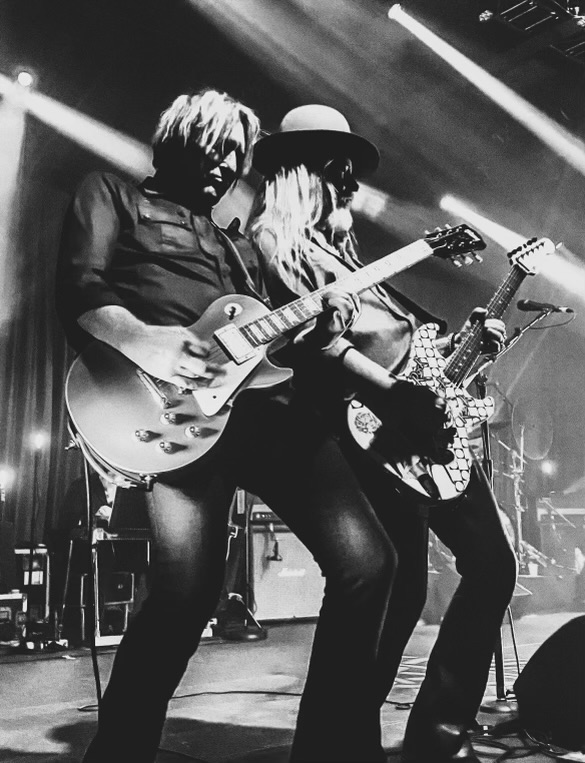
“Somewhere around the time of the John Wick meeting, Manson convinced me to put his band together and join him on tour as the lead guitarist in support of The Pale Emperor, which was a hit record and tour for Manson. I ended up playing 110 shows around the world with Manson, and I typically flew back to L.A. on days off to work in my studio, regardless of wherever we were on the planet. I was running myself into the ground, but it was also a lot of fun to perform Manson’s classic and new songs alike with my friends.”
More collaborations followed, including songwriting and producing with Gavin Rossdale on the two most recent Bush records, as well as co-writing with artists such as Rina Sawayama and In This Moment on the John Wick soundtrack, and composers including Timothy Williams, Chelsea Wolfe, and, for the past five years, Joanne Higginbottom, with whom Bates has worked with for 13 years since she came to the U.S. from Wales. Bates and Higginbottom have co-composed scores for many projects, beginning with the 2018 film The Public, directed by Emilio Estevez, on through the upcoming Unicorn: Warriors Eternal.
THE STUDIO
Higginbottom also works daily in Bates’ home-based, multi-room studio, where he writes, records vocals, instruments and demos, and mixes up to a point before sending film and television cues to longtime mix collaborators Robert Carranza or Wolfgang Matthes for finaling. While Bates was jamming onstage on that most recent six-week leg, the studio was going through a rather extensive infrastructure overhaul to “streamline everything.”
New wiring has gone in, powerful new Macs have been added that “within ProTools can handle a massive orchestral template of 70 or 80 instruments at one time,” and a custom desk was built to handle tabletop synths and the way Bates likes to work. Most of his work takes place in Pro Tools, “because it acts the most like a tape machine.” Logic’s EXS24 is the sample playback platform that houses Bates’ library of custom-made sounds, while Kontakt is the platform for the hundreds of sample libraries in use at his studios. Each of his rooms are outfitted with ATC monitors—Bates has 150s for whenever there is a call to crank up the volume.
He also uses Bricasti and Eventide reverbs, Chandler TG2 and UA 610 preamps, and lunch boxes, including a wide variety of 500 Series preamps. Lately, he’s been enamored with Soyuz, Manley and Chandler microphones to cover the wide spectrum of voices and guitars recorded in his studio. “I try to keep the tech simple so that my focus is on the creative process—the idea, the song, the lyrics and so on.” he says.
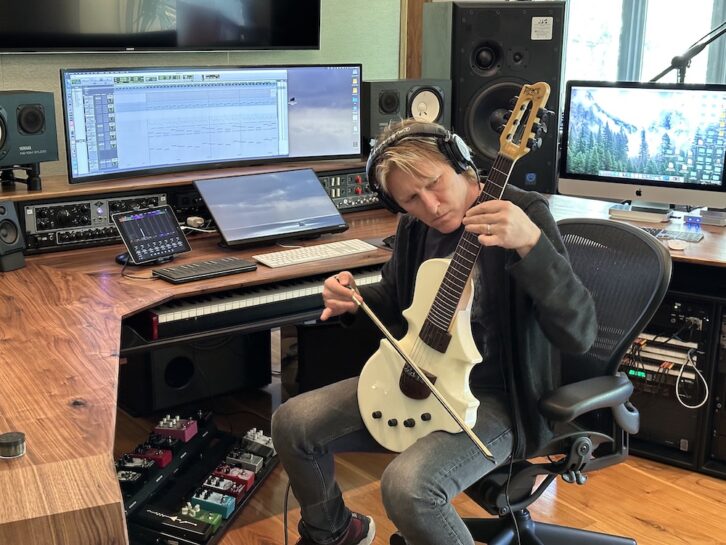
“I’ve really enjoyed these past 18 months,” he concludes. “I loved working with Starcrawler on their current album, She Said, which went down during the down period of the pandemic. It was an incredibly strange and challenging time for everyone I know, but it presented me with time enough to relax and really enjoy making that record, and the Dark Nights Death Metal record, without the deadline pressure. Maria Brink of In This Moment and I endeavored in a couple song collabs that led to In This Moment and I writing “I Would Die For You,” for John Wick 4, and also working together on their Blood 1983 EP last year, which I co-produced with Dan Haigh of GUNSHIP.
“I am grateful for all of the wonderful collaborations I experience daily, from movies and television to records and live performances, with exceptionally talented artists. These experiences broaden me as a person and as an artist. It’s always a fun challenge to create a process to work naturally with other artists to make music that we love. This is the fuel to the fire—and honestly, there is not a single day that I wake up where I am not excited to see what the day will bring.”
